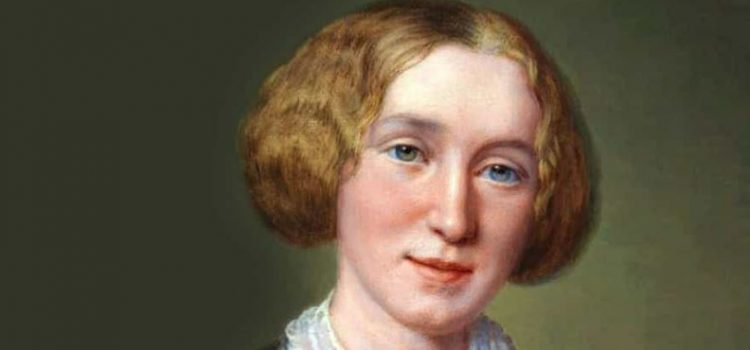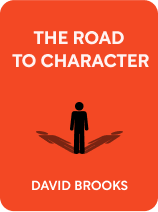

This article is an excerpt from the Shortform book guide to "The Road to Character" by David Brooks. Shortform has the world's best summaries and analyses of books you should be reading.
Like this article? Sign up for a free trial here .
Who was George Eliot (a.k.a. Mary Anne Evans)? What did she do for living? What are her most famous works?
George Eliot (birth name: Mary Anne Evans), was the acclaimed author of many fictional works including Silas Marner and Middlemarch. She had a difficult upbringing and struggled to find her place in the world but developed her sense of self through the devouring of books and information.
Keep reading for George Eliot’s biography.
George Eliot‘s Life
Author of the masterpiece novel Middlemarch and numerous other writings, author George Eliot demonstrated the importance of:
- Taking agency for our own lives—developing our own set of moral guidelines.
- Developing a resilient sense of self based on our own valuations, not based on how others see us.
- Allowing deep, committed love to open us up to transcendence
Below is a brief biography of George Eliot that highlights her character development throughout life.
Eliot’s Character Development
The novelist George Eliot was born in England in 1819 under the name Mary Anne Evans. She was sent to boarding school at five years old, her mother died when she was 15, and then she was forced to return home to serve as her father’s housekeeper. Her only ally was her older brother, who eventually abandoned her.
Mary Anne lived in a time when there was no such thing as higher education for women, but her natural intelligence and curiosity drove her to become a voracious reader. Her constant devouring of books was her way of searching for meaning, and by her late teens, she thought she had found her answers in Christianity. She became a religious extremist, alienating all her friends with her puritan views, but then a few years later, she rejected Christianity altogether. She created a huge rift with her father at age 23 when she told him she would no longer go to church with him.
Heavily influenced by every book that she read and every conversation she had, Mary Anne drifted from one philosophy to another, never quite finding an anchor for her mind or heart. She felt fragmented and lost. In her quest for a philosophy that would solidify her moral vision, she struggled with endless internal anguish. But at the same time, she was becoming her own person. Her desire for intellectual honesty was greater than her desire to agree with her family or society.
Eventually, Mary Anne compromised with her father and agreed to accompany him to church as long as he didn’t force his Christian views on her. She and her father reconciled, and Mary Anne learned a valuable lesson about tolerance and moderation in relationships. Not every disagreement required renouncement. People had differing opinions on all kinds of subjects, and they could agree to disagree. This insight into the complexities of human nature and relationships would later play out in her novels’ characters.
Eliot’s Struggles
In her early 20s, Mary Anne had short-lived, torrid affairs with almost every man who paid attention to her. Her ego craved male attention but was never satisfied. She became involved with several married and/or unavailable men, and each affair ended unhappily. Afterward, she would collapse into bouts of depression, hysteria, and self-centeredness.
It was hard for Mary Anne to find a partner who was her intellectual equal. If she found a man who could keep up with her conversation, she fell in love. She was like a free-floating obsession looking for something, or someone, to attach to.
At age 32, Mary Anne fell in love with the philosopher Herbert Spencer, who was a solid match for her intellect. Spencer enjoyed her company but wasn’t physically attracted to her (Mary Anne was famously homely). His rejection of her was the catalyst for her maturation. She finally knew what kind of life and what kind of partner she wanted, and that ideal came to fruition when she met writer George Lewes at a bookshop in 1851. They fell in love over shared intellectual ideas, and she spent the next 24 years with him, transforming from needy and desperate to centered and mature.
Nonetheless, their love came at a great cost. Lewes was technically married although his wife didn’t live with him (in fact, she lived with another man and they even had children together). But according to the norms of the day, Mary Anne and Lewes were committing adultery, an unforgivable scandal in their social circles.
In keeping with the thinking of the times, the onus of their relationship was on Mary Anne, not Lewes. She became known as a homewrecker and a husband-stealer. Her family and friends renounced her, and she was cut off from polite society. She knew that her decision to live with Lewes would make her an outcast, but she chose his love at the expense of her social and family connections. She committed herself fully to him, calling herself “Mrs. Lewes” even though British law would never permit it to be true.
Being a social outcast did not hurt Eliot’s genius—instead, it inspired it. The years she spent with Lewes were her most productive. Lewes persuaded her to try writing novels instead of essays, which resulted in her most acclaimed works (and also led to her name change to George Eliot, a name she took to hide her “unseemly” identity). Her decades-long relationship with Lewes changed her from someone who was temperamental, reckless, and impulsive to a mature adult who was able to create soul-searching fiction. In sacrificing her place in society, she had taken agency over her own life. She became a more sympathetic and understanding human being by opening herself up to selfless love, turning away from others’ criticisms, and developing her own sense of right and wrong.
Lessons From Eliot’s Life
- Through loving someone deeply and wholeheartedly, we become better people. We love the world more generously, we love ourselves in a more forgiving way, and we may even discover a sense of spiritual awareness.
- Each of us must define our own moral code and live by it. That is how we take agency for our own lives.
- Love humbles us—it’s a great reminder that we’re not in control. Because deep love requires full surrender, it can serve as a moral force that helps build our character.

———End of Preview———
Like what you just read? Read the rest of the world's best book summary and analysis of David Brooks's "The Road to Character" at Shortform .
Here's what you'll find in our full The Road to Character summary :
- How the world has become "me-focused" rather than "we"
- An analysis of eight historical figures who selflessly contributed to the greater good
- A 15-point plan to help you live a more virtuous and happy life






